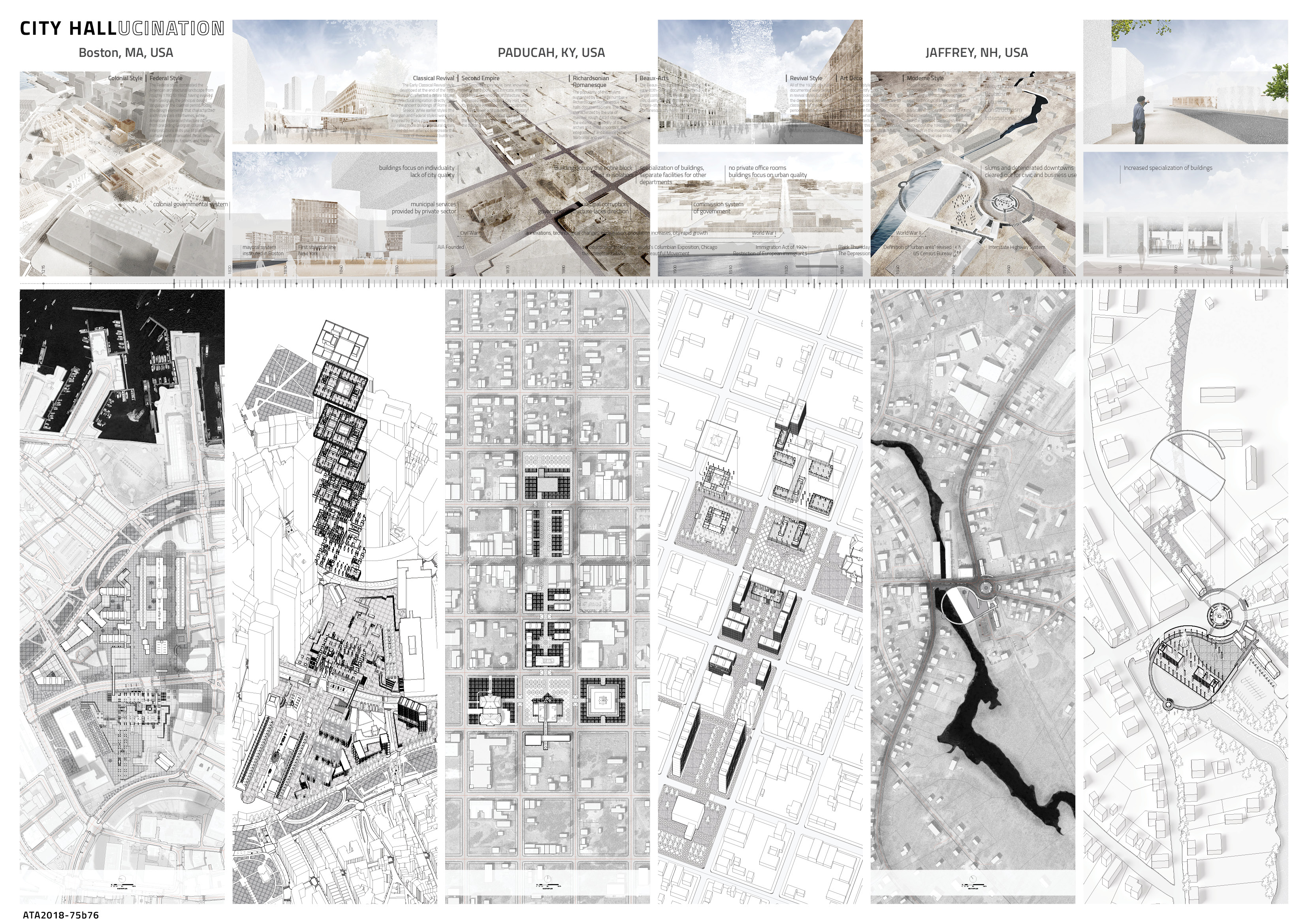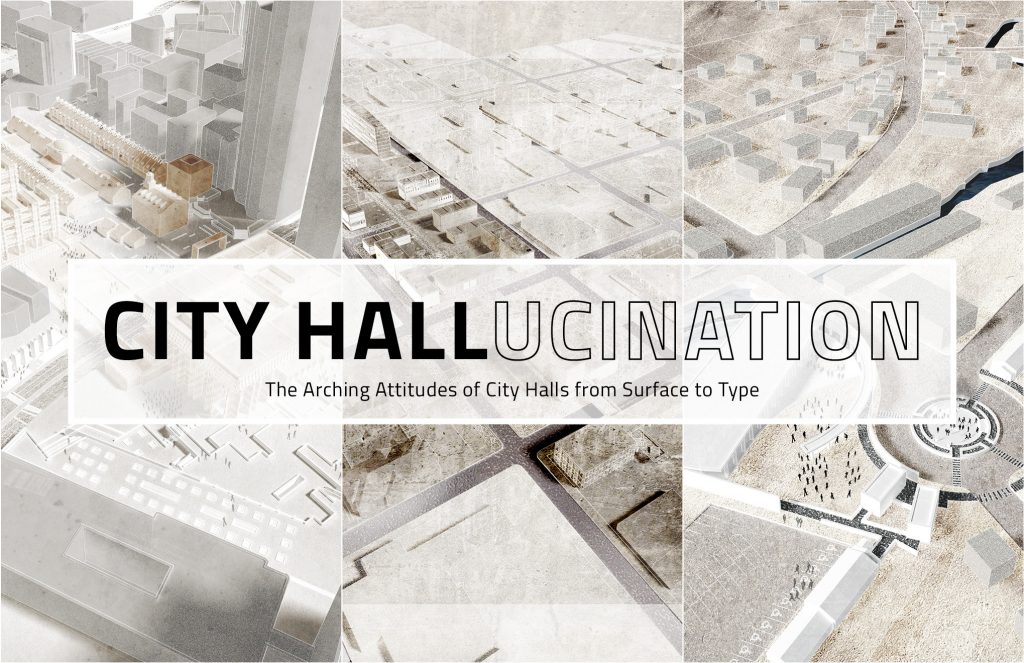This thesis aims to examine the role of city hall as an acupuncture architectural and urban design project within the American urban landscape across from urban centers to urban edges. It is both 1) a taxonomic research that examines the arching attitudes towards the political, social and spatial dimension of city halls across time in the context of American cities, and 2) a combination of three design proposals with intention of deriving new designs and understanding of the city halls that aim to set the 21st century terms for a sense of the commons, democracy and monumentality moving from surface to type.
“CITY HALLucination” received 2016 Urban Design Thesis Prize at Harvard University Graduate School of Design.
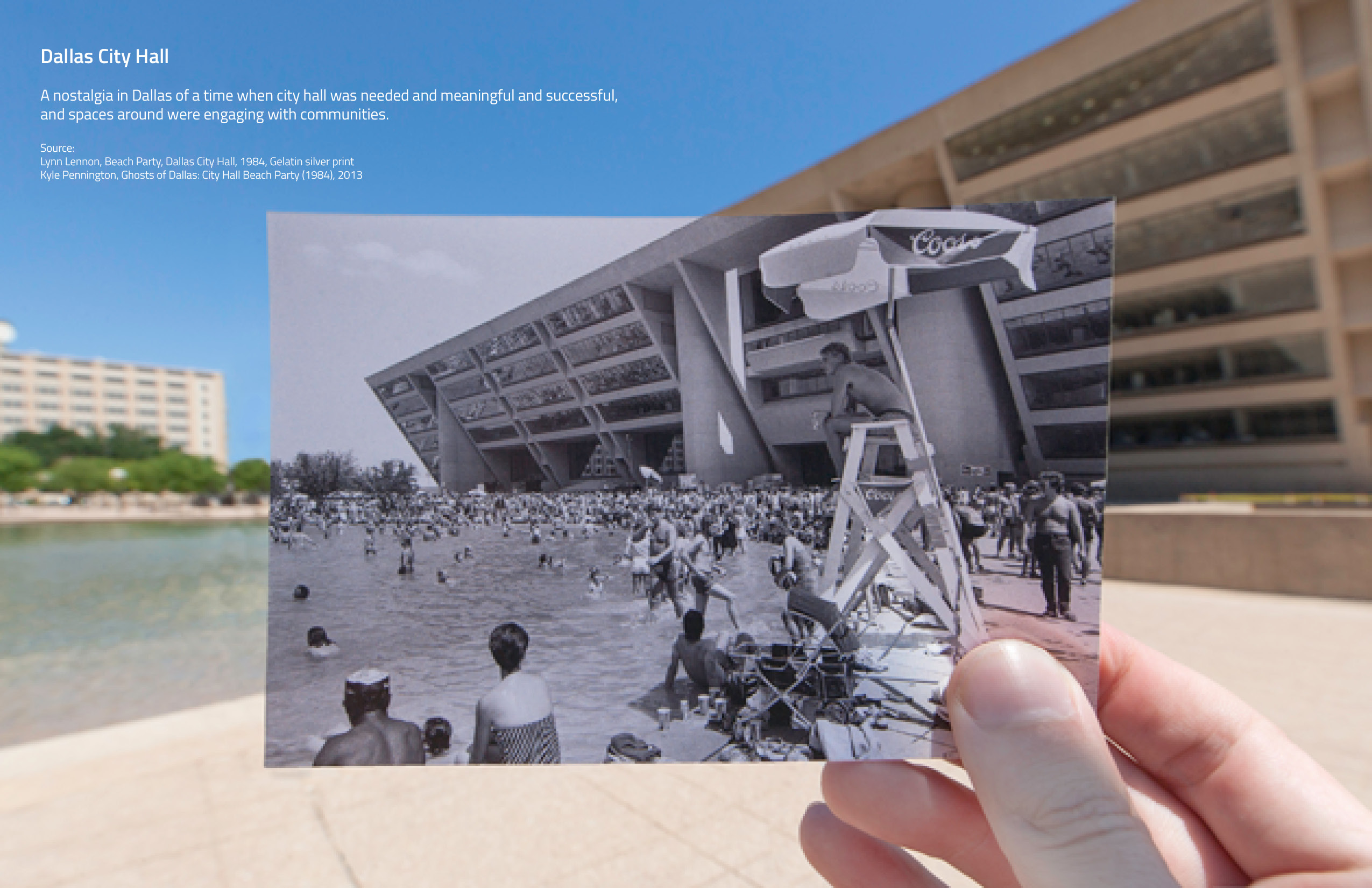
FRONTIER OF KNOWLEDGE “Architecture contradicts the need of the here and now as soon as it proceeds to serve those needs -- without simultaneously representing any absolute or lasting ideology.” -- Theodor Adorno, 1965 There is always a gap between architectural practices and pedagogical theories. In the realm of city hall and symbolic civic public spaces, this gap somehow seems even bigger. The civic spaces has been widely discussed throughout the centuries, from church-dominated medieval city center to modern symbolic civic axis spaces. On the other hand, built architecture always seems problematic, or in other words, unsatisfied. Boston city hall serves as a great example which was guided by Lynch’s idea of creating a legible image of the city, while the physical outcome is somehow “an atrocious waste of space” and “anti-urban” described by the Boston Globe. This gap, of course, has something to do with the time span between the design of the architecture and the finish of a construction. More importantly, there is little research of inventories in terms of single monumental architecture paired with iconographic public spaces typologies, and the changing awareness of publicness and public space. This thesis is less about resolving design problems on site, but rather "hallucinating" to design a position about what should a 21st Century model of civic space be.
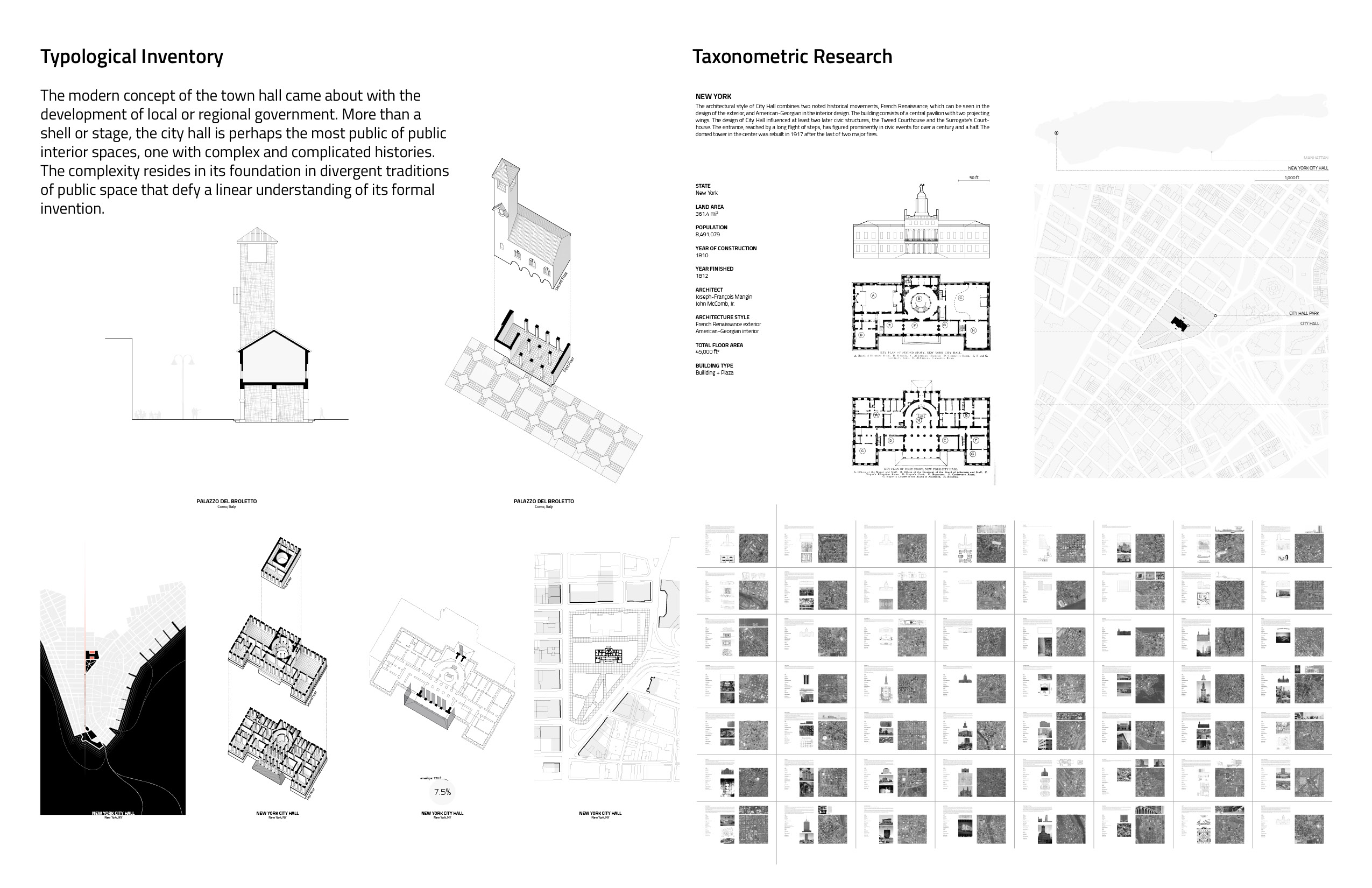
DESIGN INTENT The city hall is found all over the globe, and yet it is an understudied building in terms of both architectural history and typology. This thesis is important because it would open up a discussion between the original manifestation of the city hall, current attempts to accommodate a larger suite of cultural and civic activities, and, in reality, the frequent lack of civic activities in many contemporary city centers. The project would also discover a transition from surface to type for contemporary city halls that revives the sense of the commons which was lost, in particular, a type that might be able to both meet the administrative needs of city government and catalyze a new sense of public space with multi-functional urban activities across the various urban landscape. The choice of three design sites in American built environment is 1) Boston, MA - a high density urban center, 2) Paducah, KY - a representative spread-out suburban landscape, and 3) Jeffrey, NH - an urban edge only exist by intentionally absorbing infrastructures built for a larger contexts. In each unique design, a position was designed to advocate elements of publicness, securities, authorities and domesticity, through either aggregating density of housing along the edge to define the civic spaces as shown in Boston City Hall, or extending visual connection between iconographic monumentality and daily commute route to introduce a sense of "homecoming" as shown in Jeffrey City Hall.
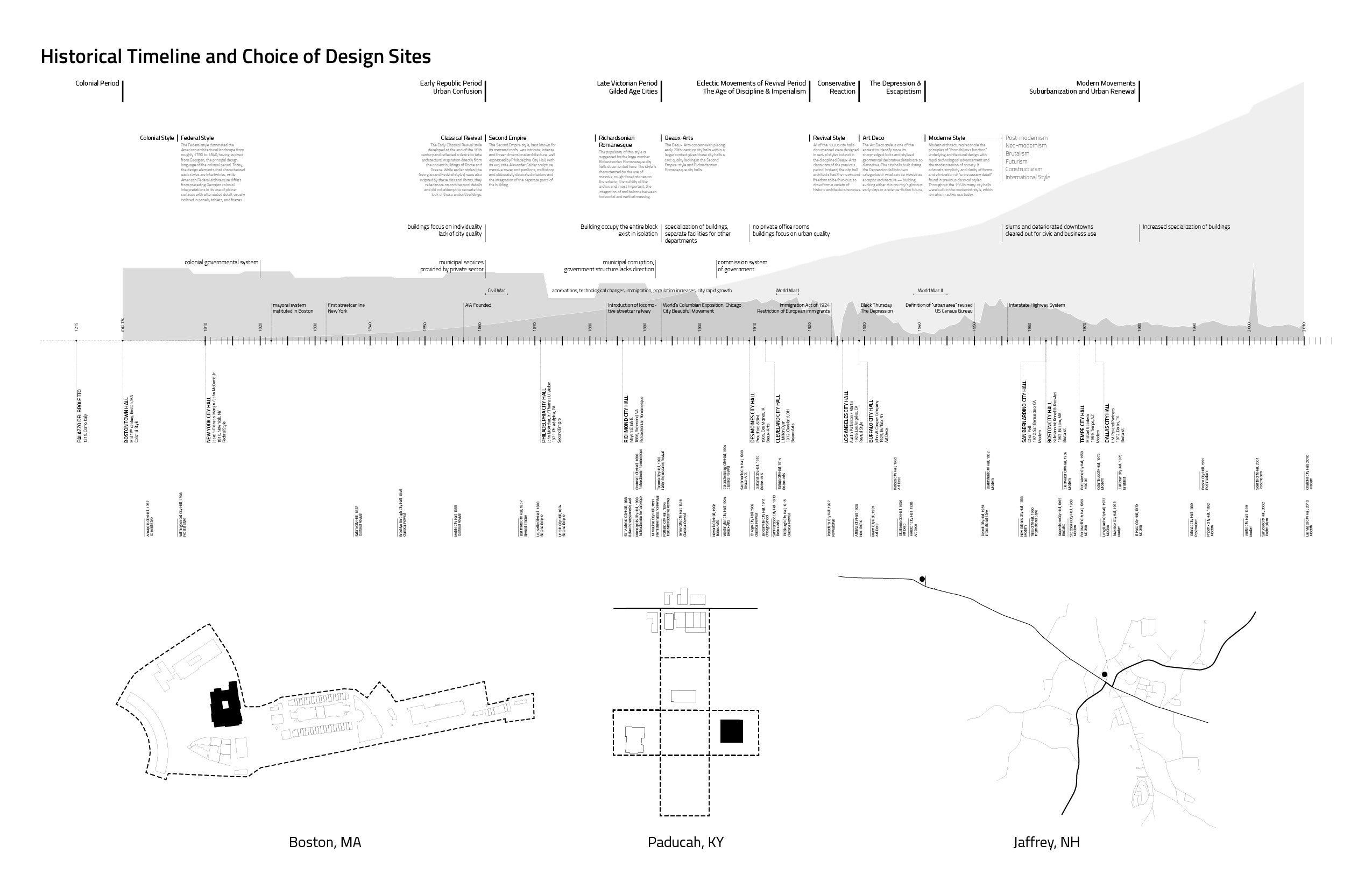
The Board:
